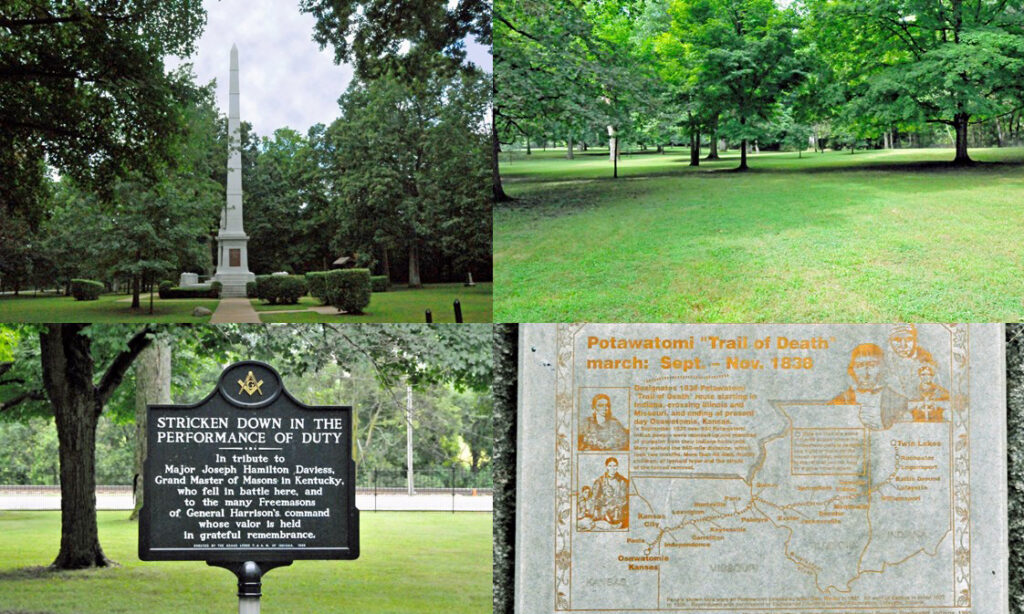The Tippecanoe Battleground, a National Historic Landmark, remembers a battle some Hoosiers might rather forget.
Tenskwatawa, a Shawnee religious leader nicknamed “the Prophet,” and his brother Tecumseh, an eloquent military leader, opposed United States expansion west of the Wabash River. By 1811, they had gathered 3000 followers from 15 tribal groups to Prophetstown, located where the Tippecanoe River joins the Wabash. Fearing the power of this multi-tribal confederacy and learning that Tecumseh was away, Indiana Territorial Governor William Henry Harrison led 1000 troops to a campsite 1.5 miles west of Prophetstown, determined to destroy the confederacy. At 4:00 A.M. on November 7, Harrison’s sentinels detected either attackers or scouts (accounts vary) and began firing, precipitating the Battle of Tippecanoe. When the Native Americans, low on ammunition, withdrew two hours later, 62 of Harrison’s soldiers, including 11 officers, were dead or dying and 126 more were wounded. The claim that the British supported the Prophetstown warriors contributed to the War of 1812, in which Tecumseh died fighting for the British.
Despite its high casualties and failure to end the confederacy, Harrison promoted the Battle of Tippecanoe as a great victory, with him as its hero. John Tipton, a United States Senator from Indiana who survived the Battle of Tippecanoe, purchased the 16-acre battleground and donated it to Indiana in 1836. Two years later, the battleground was a layover stop along the Trail of Death on which Tipton drove 859 Potawatomi out of Indiana. On May 29, 1840, 30,000 supporters of Harrison’s second (and successful) campaign for president rallied on the battleground, chanting “Tippecanoe and Tyler Too.” Since 1851, Indiana’s Constitution has required perpetual protection of the battleground. In 1908, Indiana erected an 80-foot-tall obelisk on the site, honoring Harrison and his soldiers. Today’s visitors can listen to recorded descriptions of important battle events where they occurred.

Comments are closed.